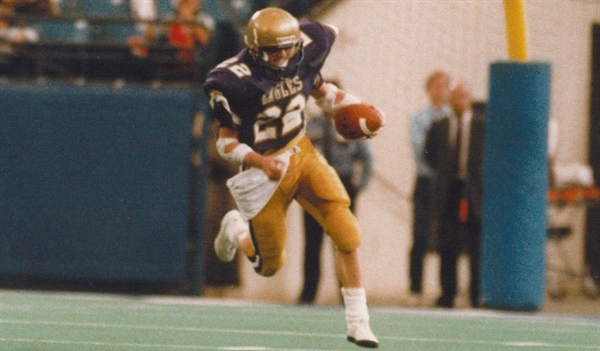
Heads and Heat
August 16, 2012
We are engaged in very serious discussions. They’re not only complicated, with unintended negative consequences possible from what are thought to be positive actions; they’re also a matter of life and death.
The topic is football – the high school sport under most scrutiny today and suffering from the most criticism it’s seen since the 1970s when catastrophic neck injuries spiked, liability awards soared, many insurers balked, and most helmet manufacturers abandoned the business altogether.
During recent years we have learned about the devastating long-term effects of repeated blows to the head; and we’re trying to reduce such hits. We’ve learned that 70 percent of concussions in football result from helmet-to-helmet contact, and we’re trying to have coaches teach blocking and tackling differently and have officials penalize “high hits” consistently and rigorously.
During the past several years we’ve learned that serious heat illness and heat-related deaths are 100 percent preventable, yet nationwide there were 35 heat-related deaths in high school football alone from 1995 to 2010; and we’re promoting practices that acclimatize athletes more gradually than “old school” traditionalists might advocate.
As we simultaneously address issues of heads and heat in football, some coaches may think we’re being overbearing, while many in medical fields say we’re out of date, citing higher standards of the American Academy of Pediatrics, National Athletic Trainers Association and National Federation of State High School Associations, as well as many of our counterpart organizations across the country.
As we consider in-season changes to improve athlete acclimatization and reduce blows to the head, we should be open to making out-of-season changes that work toward rather than in opposition to those objectives. There can be no sacred cows. The topic is too serious.
Ultimately, if we err in the outcome of this year’s discussions about heads and heat in football, it must be on the side of safety, on minimizing risks for student participants. They deserve it and, once again, the sport of football needs it.

Moment: Johnson Follows Purple Wall
October 15, 2020
By John Johnson
MHSAA Director of Broadcast Properties
Brad Johnson saw the wall and was off to the races.
The star do-everything player for Schoolcraft had already scored one touchdown on the day in the 1988 Class D Football Final against Frankfort at the Pontiac Silverdome, and back in a punt return mode in the second quarter, he faked a reverse, saw the wall and he was gone.
An 87-yard punt return, the longest in state finals history by a good 25 yards.
“After making my fake, I looked up and there was a wall,” Johnson told the Detroit Free Press. “All I had to do was outrun everybody.”
The play gave the Eagles a 21-7 lead at the time and broke the game wide open. Schoolcraft cruised to a 42-7 victory to finish the season at 13-0.
PHOTO by Gary Shook.

